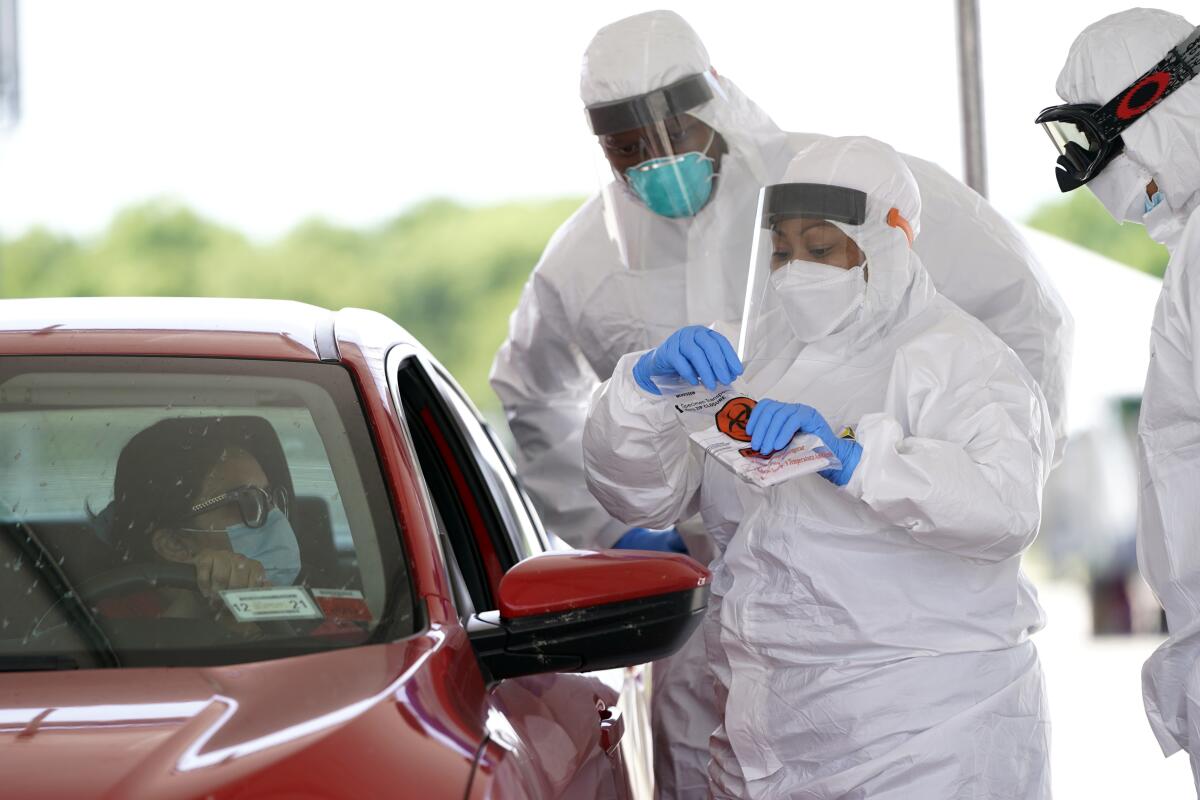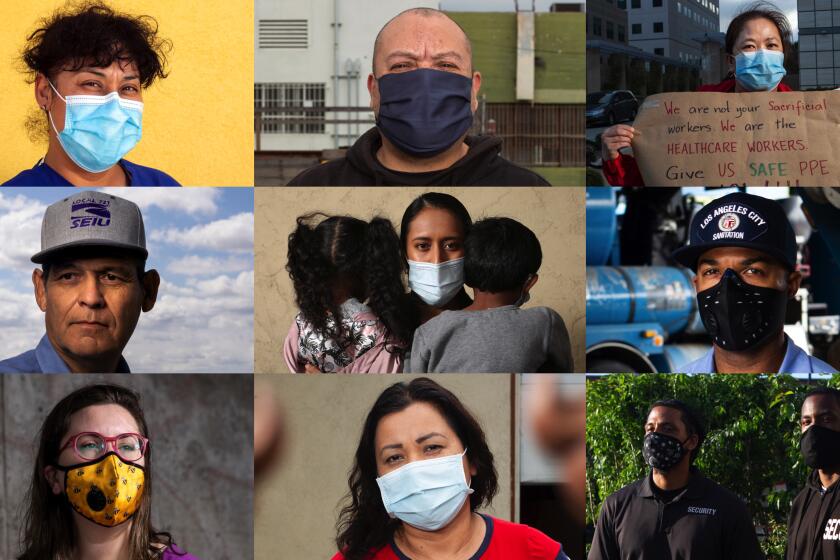Coronavirus is the great unequalizer

- Share via
WASHINGTON — We live in an unequal society, and the coronavirus is making it worse.
The pandemic has struck disproportionately at poor people in cities, almost as if it were deliberately targeting minorities. In New York, the death rate among African Americans and Latinos has been roughly twice as high as among white people.
The economic impact has been unequal too. A survey released Tuesday by the Robert Wood Johnson Foundation reported that more than half of the workers who have lost income because of the pandemic were already below the federal poverty line. Higher-income workers, by contrast, have mostly kept their jobs.
Lines snake through parking lots at grocery stores. Buses carry people to essential jobs.
Now add a third, cruel form of inequality: unequal risk.
Knowledge workers who can work at home are riding out the pandemic in relative safety. First responders, healthcare workers, bus drivers, grocery store clerks and delivery workers don’t have that luxury.
To keep their paychecks coming, they have to go out in public and risk infection — even though they generally aren’t as well paid as the managers (and journalists) who work at home.
Those are the new facts of American inequality. They’ll persist as long as the coronavirus is at large. The economic impact is likely to continue even longer.
“We had a lot of inequality before the pandemic, and we’re going to have a lot more before it’s over,” Isabel V. Sawhill of the Brookings Institution, a leading scholar on poverty and class, told me. “It’s quite scary to think about what will become of the country when the effects are so uneven.”
The question is: What do we do about it?
Will this be a moment for Americans to take a searching look at our society’s inequalities, and decide to raise the incomes of the working poor?
Or will we choose to muddle through the Pandemic Recession and try to forget everything we’re suddenly seeing in stark relief?
So far, federal and state governments have been in crisis mode, scrambling to quell the pandemic and halt the economy’s free fall.
Congress has passed four economic relief bills with more than $3 trillion in emergency spending, an emergency effort of unprecedented size.
But the measures have been short-term and top-down. They began with bailouts for airlines and other big businesses, then added a massive program of loans for small businesses, direct payments to taxpayers and expanded unemployment benefits.
Meanwhile, the Federal Reserve has buoyed the stock markets by lending trillions to banks, businesses, states and counties.
The rollout has been plagued with more than its share of problems.
The small-business loan program started in chaos, and funneled much of its money to big businesses instead. The second round, which began Monday, led to widespread frustration as the Small Business Administration’s website repeatedly crashed and bankers couldn’t file applications for clients.
States have been swamped by applications for unemployment insurance; Florida reported last week that it had managed to approve only 20% of incoming requests.
President Trump hopes for a sharp economic recovery before the November election. But the International Monetary Fund warns the recession could last more than a year. The bounce-back could stall if the pandemic recurs or if wary consumers stay away from public places and continue to trim their spending.
So we need to plan for a longer ordeal.
Sawhill says that means more spending on the Paycheck Protection Program, which is intended to help small businesses, and extended unemployment insurance plus more help for state and local governments.
But the relief packages need several new elements to soften the pandemic’s impact on the no-longer-working poor.
“It’s going to be horrible for low-income families,” Sawhill told me. “The jobs that are hardest hit tend to be low-paid, including retail, food and restaurants. Those are often jobs held by women. I worry about low-income single parents. They’re mostly women, they have virtually no financial reserves, and they often have no other adult to rely on.”
She recommends expanding the low-income safety net with emergency funding for food stamps and Temporary Assistance for Needy Families, two programs that got similar boosts during the Great Recession a decade ago.
But Congress needs to put automatic triggers on all these programs, so that funding rises along with job losses. That way, the newly unemployed won’t have to depend on Congress voting for round after round of new funding amid the polarized debates of an election year.
Want to think bigger?
Gene Sperling, a former economic advisor to Bill Clinton, is proposing a $20 “living wage” package that would begin with a $15 minimum wage and add child-care subsidies and tax credits.
Other Democrats hope this will be the moment when voters coalesce around their demands for universal health insurance, so workers don’t lose access to medical care if they lose their jobs.
Those proposals will remain stretches unless Democrats win a landslide in November.
But we ought to reach a bipartisan consensus that the “essential workers” we claim to admire as heroic — including grocery store clerks, delivery service drivers and meat packers —deserve a living wage.
They’re risking their lives on our behalf. For their sake, it would be a terrible thing to let this crisis go to waste.
More to Read
Get the L.A. Times Politics newsletter
Deeply reported insights into legislation, politics and policy from Sacramento, Washington and beyond. In your inbox twice per week.
You may occasionally receive promotional content from the Los Angeles Times.












